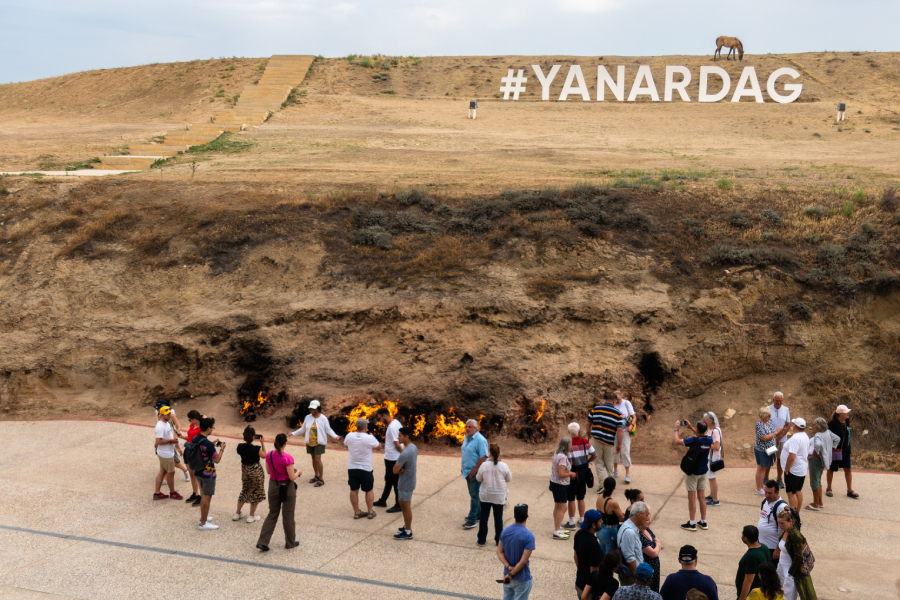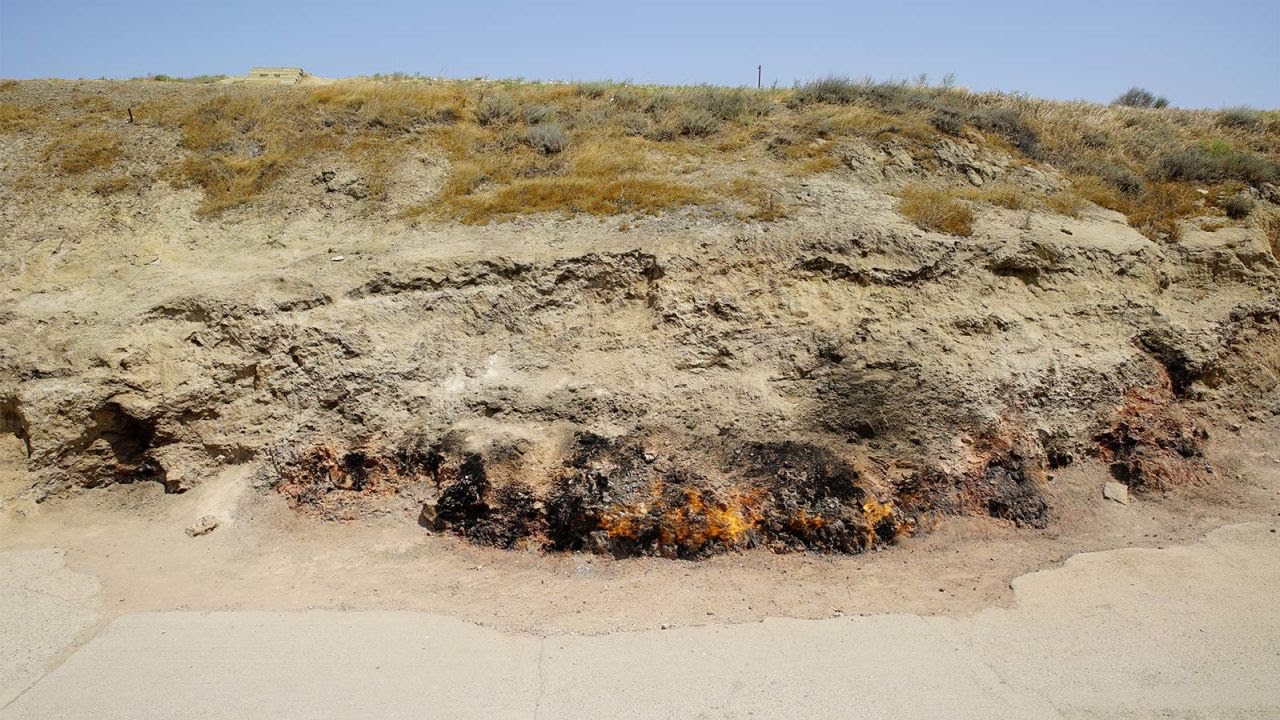The 10-meter-high flames on the hillside have long been Azerbaijan's most popular tourist attraction. That is Yanar Dag - meaning "burning slope" - on the Absheron Peninsula, according to CNN .

Yanar Dag is one of the spontaneous combustions that have fascinated visitors to Azerbaijan for millennia.
Yanar Dag was formed by geological changes that occurred in the area thousands of years ago. The hillside has many natural gas deposits and a fault in the earth's crust allows the gas to escape and burn continuously.
In addition to its geological significance, Yanar Dag is also of great cultural and historical importance to Azerbaijan. The site has been a place of pilgrimage for locals for centuries, and there are legends and myths surrounding the eternal flame. Some believe that the flame can cure illness, while others see it as a symbol of wealth.
Venetian explorer Marco Polo wrote about mysterious phenomena when he passed through Azerbaijan in the 13th century. Silk Road traders also carried news of the fire as they traveled to other lands.
This is also the reason why the country is nicknamed "the land of fire".
Such fires used to be common in Azerbaijan, but most have been extinguished because they reduced underground gas pressure, hindering commercial gas extraction. Yanar Dag is one of the remaining, and perhaps the most impressive, ones.
At one time these fires played an important role in the ancient Zoroastrian religion, which was founded in Iran and flourished in Azerbaijan in the first millennium BC.
For Zoroastrians, fire is the link between humans and the supernatural world , and the means by which spiritual understanding and wisdom can be attained.
Today, most visitors come to Yanar Dag to admire the scenery rather than satisfy their religious beliefs.
The most impressive experience is at night, or in winter when it snows, the snowflakes melt in the air without ever touching the ground. So if you are planning to visit Yanar Dag, the best time to go is in the evening, when the fire can be seen most clearly.

Eternal Flame
It takes 30 minutes drive north from the center of the capital Baku to see the flames.
For a deeper look into the history of Azerbaijani fire worship, however, visitors should head east to Baku to the Ateshgah Fire Temple. The pentagonal temple complex was built in the 17th and 18th centuries by Indian settlers in Baku.
Fire rituals at the site date back to the 10th century or earlier. The name Ateshgah comes from the Persian word for “house of fire” and the center of the temple complex features a domed shrine, built over a natural air vent from which an eternal fire has burned…
Source link

































































































Comment (0)